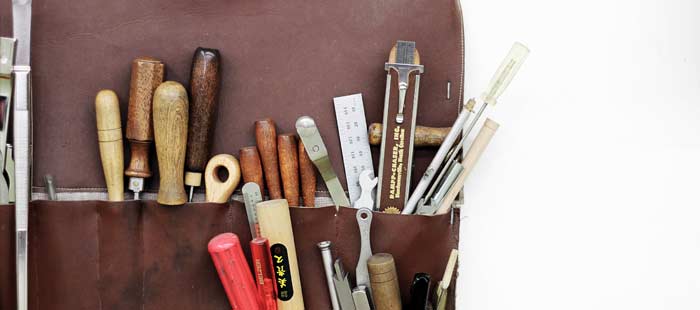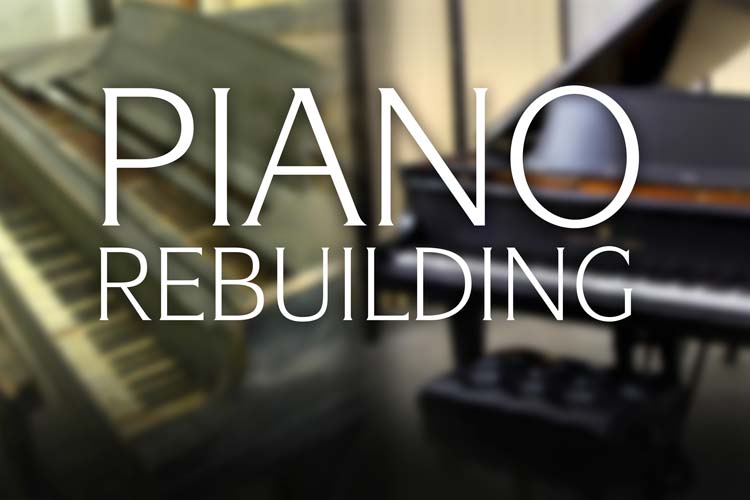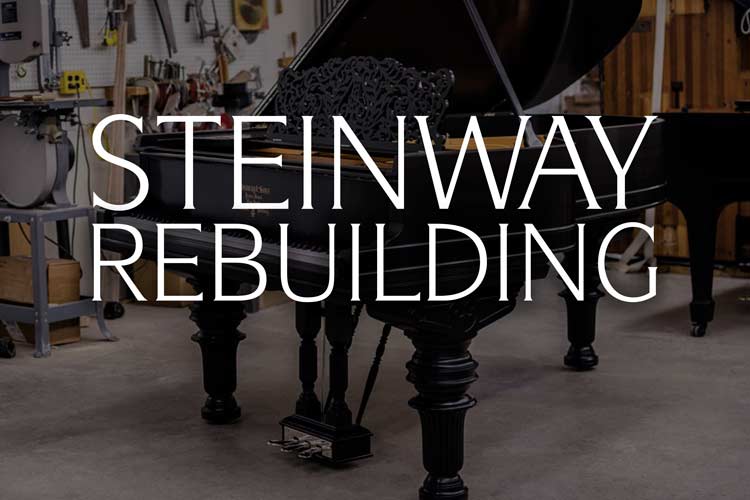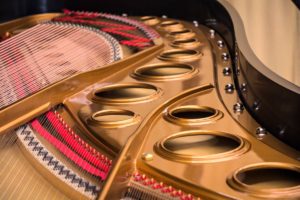
How much does a piano weigh? Does tuning equal repair work? In today’s blog post, we cover a few of the piano related questions we receive here at Chupp’s Piano Service.
How much does a piano weigh?
The combination of thick pieces of lumber, the heavy cast iron plate (sometimes called a harp), and numerous other components make the piano one of the heaviest instruments on the market today. Pianos vary greatly in weight depending on their type and size. For example, a Steinway & Sons Model B which measures 6’11” in length weighs approx. 750 lbs. while smaller upright pianos such as consoles and spinets, usually weigh in the 300 to 500 lbs range.
Old, full-size upright pianos built in the late 19th and early 20th century can be exceedingly heavy and may weigh more than many popular grand piano models! These large pianos weigh anywhere between 500 and 700 lbs. Large upright pianos, due to the combination between height and weight, can be difficult and potentially dangerous to move. Pianos are heavy instruments which means it is essential that they are moved and set up properly in order to avoid potential injury.
A New Mason & Hamlin Model CC-94 Concert Grand Piano measures 9’4″ in length and weighs an estimated 1,400 lbs! A Steinway & Sons Model D Concert Grand Piano Measures 8’11” in length and weighs an estimated 990 lbs. For comparison the smallest grand piano made by Steinway, the Model S, weighs 540 lbs.
My Piano Has Been Tuned A lot During Its Life. Does This Mean It Has Been Restored?
 Although tuning your piano on a consistent basis is essential to your enjoyment of the instrument, piano tuning does not really equal repair or maintenance. Piano tuning describes the process of altering string tension in a piano to subtly adjust the sound wave’s frequency. The end result of tuning a piano is to create an optimal playing experience, ensure the piano is at the correct pitch and eliminates unwanted ‘waves’ in the tone.
Although tuning your piano on a consistent basis is essential to your enjoyment of the instrument, piano tuning does not really equal repair or maintenance. Piano tuning describes the process of altering string tension in a piano to subtly adjust the sound wave’s frequency. The end result of tuning a piano is to create an optimal playing experience, ensure the piano is at the correct pitch and eliminates unwanted ‘waves’ in the tone.
Having your piano tuned can in some ways be compared to having your vehicle’s oil changed. It is essential to the performance of your car and is considered basic maintenance, however, it does not mean that the engine has been rebuilt or that the mechanical workings function correctly. Read more on this subject, here.
Piano tuning first became a profession as the new ‘piano fortes’ grew in popularity during the early part of the 1800s.
 Can I use furniture polish on my piano?
Can I use furniture polish on my piano?
Traditional furniture polishes can be very detrimental to the health of your piano’s finish. These contain harmful silicone and other oils that saturate a piano’s finish. Embedding itself in the piano’s finish, these oils swirl, and smear and are extremely difficult to remove.
To clean your piano we recommend the use of a microfiber cloth dampened with water. (Be sure to try and clean the piano by wiping with the grain or satin rub lines.) For stubborn fingerprints, we recommend the use of Cory Piano Polish for either satin or high gloss finishes.
[Click here to learn more about cleaning your piano’s keys.]The art of piano refinishing is the most labor intensive section of the piano restoration process.
Chupp’s Piano Service | Steinway & Sons Piano Restoration | Service Since 1975
Comments are closed






